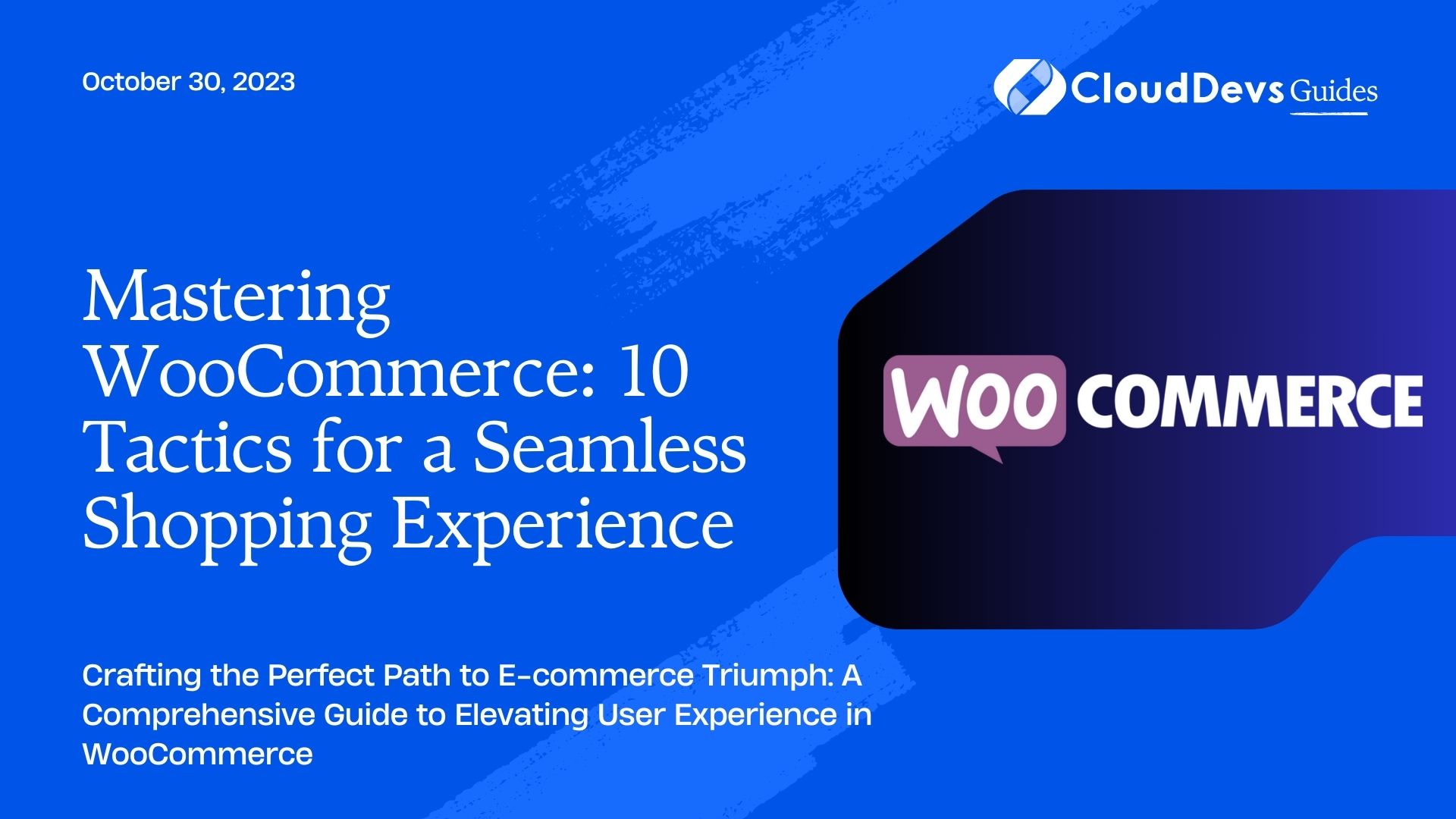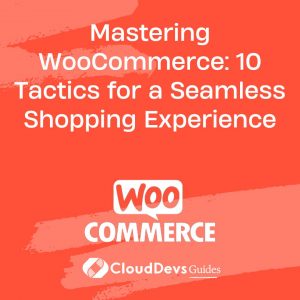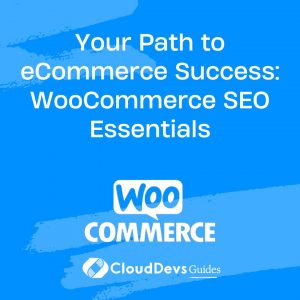Mastering WooCommerce: 10 Tactics for a Seamless Shopping Experience
In the world of e-commerce, delivering an exceptional user experience is paramount to the success of your online store. With millions of e-commerce websites competing for customers’ attention, it’s crucial to stand out and provide a seamless shopping journey. WooCommerce, a popular e-commerce platform for WordPress, offers a wide range of tools and features to help you enhance the user experience and drive conversion rates. In this blog post, we will explore various ways to enhance the user experience in WooCommerce, with practical examples.
1. Mobile Optimization
In today’s digital age, mobile optimization is no longer optional—it’s a necessity. With a significant portion of online shoppers using mobile devices, it’s crucial to ensure your WooCommerce store is responsive and mobile-friendly. Here are some tips:
Example: The online fashion retailer “StyleNook” revamped its WooCommerce website to be mobile-responsive. This led to a 30% increase in mobile sales within the first month.
2. High-Quality Product Images
Images are a powerful tool to capture the attention of potential customers. High-quality product images that showcase your products from multiple angles can significantly improve the user experience.
Example: “Gourmet Delights” added high-resolution images of their gourmet food products, allowing customers to zoom in and view intricate details. This resulted in a 25% increase in conversions.
3. User-Friendly Navigation
Intuitive navigation is essential for guiding users through your online store. Ensure that your menu structure is logical and that customers can easily find what they’re looking for.
Example: “Tech Haven” simplified its menu structure by categorizing products under clear headings like “Smartphones,” “Laptops,” and “Accessories.” This reduced bounce rates by 15%.
4. Efficient Search Functionality
An efficient search bar can help users quickly locate products, especially when they have specific items in mind. Implement features like autocomplete and filters to enhance the search experience.
Example: “ElectroMart” added an advanced search functionality with filters for price range and brand. This led to a 20% increase in search-driven conversions.
5. Streamlined Checkout Process
A lengthy and complicated checkout process can result in cart abandonment. Simplify your checkout page, offer guest checkout options, and provide multiple payment methods.
Example: “Bookworm Haven” reduced its checkout process to a single page, resulting in a 40% decrease in cart abandonment rates.
6. Product Reviews and Ratings
Customer reviews and ratings build trust and provide valuable insights to potential buyers. Encourage customers to leave reviews and display them prominently on product pages.
Example: “Beauty Bliss” added a customer review section to each product page, increasing user engagement and trust. This led to a 15% boost in sales.
7. Personalization
Personalizing the shopping experience by recommending products based on user preferences and browsing history can significantly improve conversion rates.
Example: “FitLife” implemented a personalized product recommendation system that suggested workout gear based on the customer’s fitness goals. This resulted in a 10% increase in average order value.
8. Fast Loading Speed
Slow-loading websites can frustrate users and lead to high bounce rates. Optimize your site’s speed by compressing images and using a content delivery network (CDN).
Example: “HomeCrafts” improved its website’s loading speed by 40%, resulting in a 20% increase in organic traffic and improved user experience.
9. Clear and Concise Product Descriptions
Provide detailed and easy-to-understand product descriptions that answer potential questions and eliminate doubts.
Example: “GadgetGalaxy” revamped its product descriptions with clear bullet points and specifications, reducing customer inquiries and boosting sales by 12%.
10. Effective Customer Support
Offer exceptional customer support through live chat, email, or a dedicated support section. Respond promptly to inquiries and resolve issues efficiently.
Example: “PetPalace” introduced a live chat feature, resulting in a 30% reduction in customer complaints and a 15% increase in customer satisfaction.
Conclusion
Enhancing the user experience in WooCommerce is a continuous process that requires a deep understanding of your target audience and ongoing optimization efforts. By implementing these strategies and learning from real-world examples, you can create a more user-friendly and conversion-driven e-commerce store that stands out in the competitive online marketplace. Remember, a seamless and enjoyable shopping journey not only attracts new customers but also keeps them coming back for more, ultimately driving your online business to success.
Table of Contents







